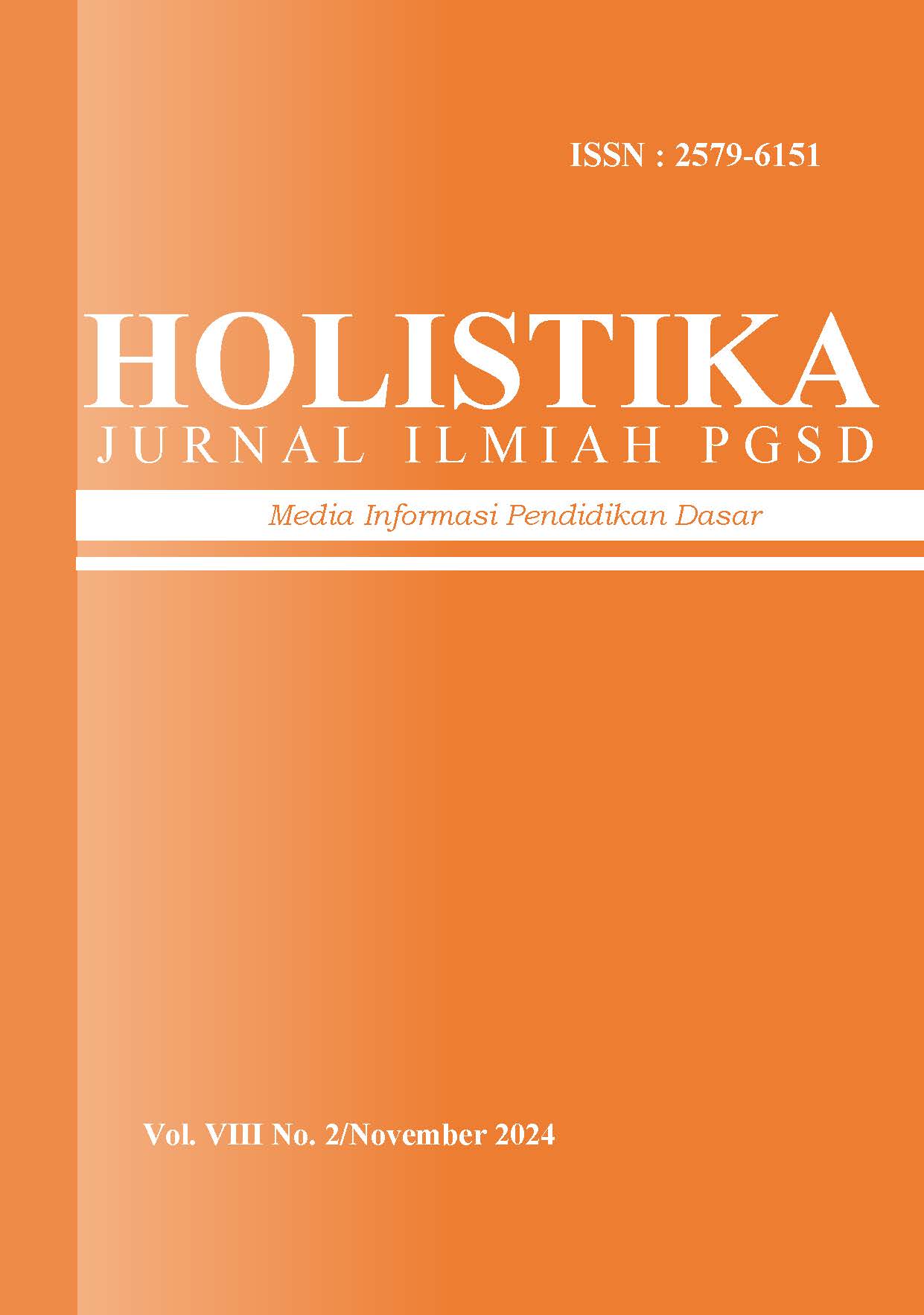Externalities Of The Implementation Of Creative Learning Model In The Independent Learning Curriculum In Public Elementary Schools
DOI:
https://doi.org/10.24853/holistika.8.2.99-109Abstrak
The implementation of the creative learning model of the independent learning curriculum at Sawangan 01 State Elementary School is applied starting in grades 1 and 4, the application that is not comprehensive is feared to produce externalities in grades 2, 3, 5, and 6. This study aims to see the externalities of the implementation of the creative learning model of the independent learning curriculum in grade 4 of Sawangan State Elementary School, Depok, West Java. The research method uses a 4-stage phenomenological qualitative method, namely: 1) Determining the problems arising from the implementation of the independent curriculum in grade 4; 2) Studying the creative learning model of the independent curriculum and examining the externalities caused; 3) Collecting data; 4) Analysing and triangulating data. This research resulted in 4 findings, namely: 1) The implementation of the creative learning model of the independent learning curriculum has been implemented starting from grades 1 and 4, then continuing to grades 2, 3, 5, and 6; 2) The creative learning model using project-based learning produces products that are exhibited at market day activities; 3) Grades 2,3,5, and 6, which have not implemented the independent curriculum, participate in the creative learning programme carried out by grade 4, namely market day activities outside the classroom; 4) Market day activities make grade 4 students more creative, dare to show their talents, and learn entrepreneurship early on, it turns out that they spend additional costs and longer learning time for these activities. The conclusion of this study is that the implementation of the creative learning model of the independent learning curriculum in class 4 has no externalities, while the implementation of learning outside the classroom (market day) has positive externalities for classes 2,3,5, and 6, namely increased creativity, talent, and entrepreneurial skills, and negative externalities in the form of additional costs and extended learning time.##submission.downloads##
Diterbitkan
2024-12-17
Terbitan
Bagian
Articles
Lisensi
Authors who publish with this journal agree to the following terms:
- Authors retain copyright and grant the journal right of first publication with the work simultaneously licensed under a Creative Commons Attribution License that allows others to share the work with an acknowledgement of the work's authorship and initial publication in this journal.
- Authors are able to enter into separate, additional contractual arrangements for the non-exclusive distribution of the journal's published version of the work (e.g., post it to an institutional repository or publish it in a book), with an acknowledgement of its initial publication in this journal.
- Authors are permitted and encouraged to post their work online (e.g., in institutional repositories or on their website) prior to and during the submission process, as it can lead to productive exchanges, as well as earlier and greater citation of published work (See The Effect of Open Access).

